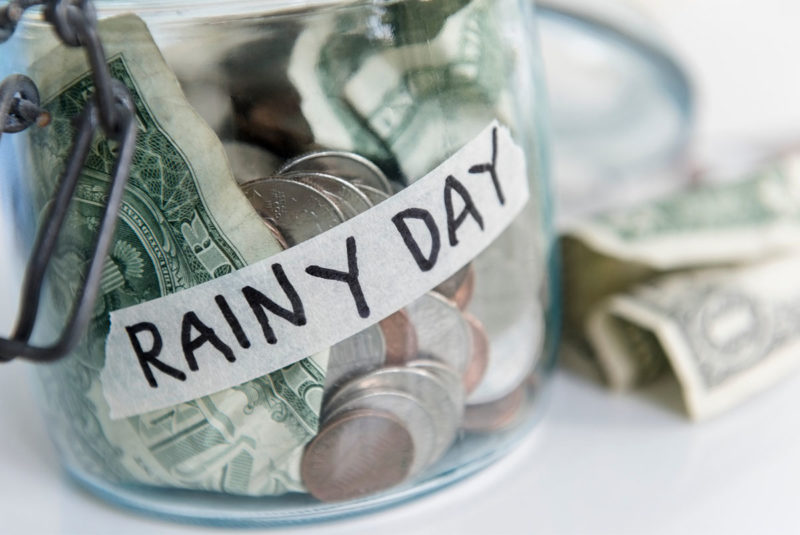The holiday season is right around the corner. Many of us are looking forward to spending time with loved ones, recreating annual traditions, gift giving (and gift receiving), and indulging in the season’s foods, desserts, and pumpkin spice everything (we see you, #TeamPSL).
So many of us get wrapped up in the “reason(s) for the season” that we don’t think twice about the money we spend until it’s too late. After the wrapping paper is recycled and decorations are tucked away, many of us go from holiday cheer to holiday hangover – with a giant bill to pay off in the new year.
$998
That’s the average amount consumers planned for holiday spending on gifts and other items in 2021.[1]
Not to be nosy, but how much do you spend on the holidays? Are you ready to rein in spending this year? If yes, you’ve come to the right people. Feel free to use our budgeting tips to reduce your chances of starting the new year with a new unmanageable bill.
Steps to Creating a Holiday Budget
Creating a holiday budget is only half of the battle. The other – and maybe the most challenging half – is sticking to it. You’ll need to summon some self-control and create a realistic budget. Use our steps to create a budget you can a) feel good about and b) stick to.
Step 1: Assess last season’s spending
Jump-start this year’s holiday budget by looking back at where you may have gone wrong (and right) the year before.
It may not be the most pleasant holiday memory to revisit, but you’ll need to gather last year’s bank and credit card statements to calculate the total amount you spent on all things holiday.
If you’re like most of us, you may be reliving the pangs of stress that usually accompany large amounts of debt. But you could also be part of the lucky few bothered by the opposite problem. Maybe you had more money available than you knew and regret not splurging a little more.
If you overspent, think about where you can cut back. If you didn’t overspend, hooray! And let’s keep things that way, allocating reasonable dollar amounts to your holiday spending categories. If you could have spent more but didn’t know it, a budget can help you see how much money is available for your holiday shopping. Whether you decide to underspend again will be your choice, but this time, it’ll be an informed decision.
Step 2: Consider if anything has changed
Has your life changed since last year, or has your family grown? Did you go on the luxury vacation of your dreams? These circumstances will impact your budget.
If you received a $5,000 raise this year, that’s great. But don’t drop more money on gifts only to drown in debt. If your salary hasn’t changed or you’re dealing with a pay cut, spending the same or more than last season probably isn’t a money-savvy decision.
Assessing what went right – and wrong – last year will help set you up for success as you prepare your budget for the holiday season.
Step 3: Create holiday spending categories
Make a list of your holiday spending categories. Use our recommended categories, and feel free to add custom categories that match your unique needs and holiday traditions.
By the way, don’t worry about how much everything costs now. You’ll add dollar amounts to your categories in step five.
- Gifts: The gift category is a good one to start with because it’s where most people spend a good chunk of their budget. Jot down the names of everyone you want to buy a gift for friends, neighbors, coworkers, relatives, and even family pet(s)!
- Holiday decorations: What will you need for holiday decor for this year? Do you need a new kinara for Kwanzaa? Do you want a fancy, flocked Christmas tree? Or does the extent of your decorating involve buying a new tablecloth for the dining room table? List the different decorations you plan to buy for your home this season.
- Holiday travel: Is the annual pilgrimage to a family member’s home still happening? You should compare the cost of driving or flying. And whatever you decide, buy snacks and drinks to avoid overspending during pit stops or extended stays in airport lounges.
- Food: Are you planning to play host this holiday season? Will the gathering be a potluck, or will you be responsible for food and drinks? If you want to cut costs, see if your guests would be willing to go the potluck route.
- Traditions: Annual traditions are another spending category that can quickly rack up coins. Whether it’s a trip to an ice skating rink, fancy dinners out, or cutting down the biggest (and most expensive) tree at the local Christmas tree farm.
- Outfits and accessories: What’s a holiday season without an Instagram pic of you and the fam in matching pajamas? If that’s an important tradition, add an outfits and accessories category to your budget. P.S. The new outfit(s) you’re buying for holiday parties counts, too.
- Charitable donations: It’s the time of year for giving. Whether you love making an annual contribution to the Make-A-Wish Foundation or a local animal shelter, make sure to account for these expenses.
- Tips: You may have never considered this spending category before, but it’s a thing – and tipping is an expense. Tips for newspaper delivery people, postal workers, door attendants, coaches, and daycare providers can add up quickly.
Step 4: Determine the amount of money you can spend
Now that you’ve laid out your spending categories, it’s time to decide the total amount you can spend this holiday season.
This number should be reasonable to increase your chances of sticking to your budget. And you need to know where the money will be coming from.
If you pick up extra shifts during the holidays or receive a generous bonus, consider applying the additional funds to your holiday budget. If you’re relying on your salary or plan to use a credit card or loan, you should spend conservatively and have a plan to pay off the debt.
What is the recommended amount of money to spend on all things holiday?
Before COVID, financial experts recommended spending no more than 1% of your annual income on holiday expenses. If you earned $60,000 a year, you could safely spend $600. But if you are still financially recovering from the pandemic, we’d advise reducing this amount.
Step 5: Allocate a dollar amount to each spending category
Now it’s time to figure out how much money to allocate to each spending category.
Work through each category, assigning amounts you can comfortably spend on gifts, decor, etc. After adding a dollar amount to each category, you’ll be able to see if you budgeted enough money to meet all your spending needs. If that’s a no, can you adjust the dollar amounts in your spending categories? Can you lower the allotted amounts for specific categories? Otherwise, you’d need to increase your total budget.
If your budget is higher than you can afford to pay off comfortably, think of small hacks you can try to save money while you’re out holiday shopping, including:
- Taking advantage of Black Friday and Cyber Monday deals
- Using coupons
- DIY presents
- Buying wrapping paper, greeting cards, etc., from budget retailers
Step 6: Stick to your budget by staying accountable
And finally, what’s the point of sitting down and creating a budget you never stick to? You must find a way to remain accountable as you merrily spend away.
Consider a budgeting app to keep track of spending. Or recruit a “budget buddy” who can hold you accountable. Do whatever you need to keep track of your holiday expenses and stay within your budget.
‘Tis the Season for Holiday Cheer – Not Debt
Preparation is key. And it’s never too early to start your holiday financial planning. Apply our holiday budgeting tips to enter the new year with a pile of presents – not bills.
The Short Version
- Jump-start this year’s holiday budget by looking back at where you may have gone wrong (and right) the year before
- The next step to creating your holiday budget is to outline your spending categories
- Consider a budgeting app to keep track of your spending
National Retail Federation. “Retail Holiday and Seasonal Trends.” Retrieved September 2022 from https://nrf.com/topics/holiday-and-seasonal-trends/winter-holidays




